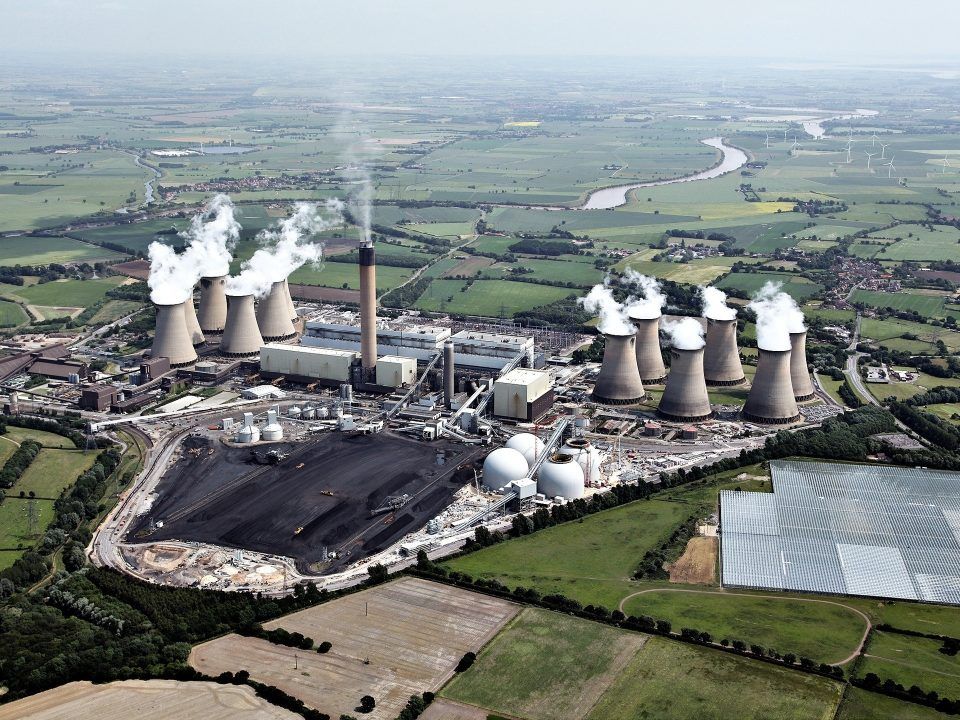Forty years into the dome-building process, Dome Technology continues to innovate as it builds each custom dome, and with more than 600 domes in the portfolio, it’s easy to see why.
“We built the first wood-pellet dome and have since built all of the wood-pellet domes around the world,” said Dome Technology CEO Bradley Bateman. “As a pioneer in the dome-construction process, we innovate and provide optimal systems for our customers, proving to be the trusted experts for bulk storage.”
The model of choice for wood pellets is the DomeSilo™, a robust structure that rivals silos in cost efficiency and dominates in storage capacity. Although each project is unique, a few benefits are constant with every DomeSilo:
Small footprint, affordable foundation
Prime portside property comes with a big price tag, and companies get less land for the money than they likely will elsewhere. A DomeSilo makes the most of available property, providing more storage than silos or flat storage with the same size footprint.
Because of its geometry, this kind of dome allows companies to store more product. The double curvature of a dome lends itself to the ability to build up, rather than out, and the curve provides strength at all points of the structure, even at the apex. The entire interior of a dome, then, can be used to store product.
Establishing the right foundation will always be of utmost concern on a port with its low-strength soils. The Dome Technology team specializes in exploring innovative alternatives to expensive deep foundations; some common options include the following:
- Where the top six to eight feet of ground is less-than-desirable material, it can be replaced with controlled structural fill. This model allows for some settlement, but the amount will be within tolerable parameters for a dome.
- When the top 15 to 50 feet of soil doesn’t provide the needed bearing strength, stone columns are a workable option. Crews use an auger to remove soil in about a 30-inch (76-cm) diameter hole down to a suitable, soil-bearing layer. Rock is placed in the hole and compacted, increasing the strength of the soil. With soft or clay-concentrated soils, a casing must be used to prevent it from collapsing on itself.
- The dome ring foundation or ring beam is a shallow foundation system that can be used at sites with acceptable soil conditions. This is an especially viable option at sites with consolidated soils from supporting heavy storage facilities in the past.
For areas where deeper foundations are required, other systems are available.
Various foundation systems can work for a dome and its smaller footprint, and a front-end engineering design study will determine which is best and provide budgetary numbers so companies can compare costs with other storage types. That being said, a dome might not require a deep foundation at all. Steel-reinforced concrete on its own tolerates some degree of settlement and movement compared to a large flat storage.

Customization
As a pioneer in dome construction, Dome Technology’s company culture is steeped in innovation. Here are a couple recent additions to the list of custom features offered to customers:
Round explosion panels
Until now, square and rectangular explosion venting has been the norm in storing products prone to deflagration, but Dome Technology’s team has pioneered a round hybrid model that has been installed on domes since 2016.
“No matter what system, you’re creating a weak spot with panels, whether it’s a pre-manufactured rectangular panel or a metal cladding piece. This is a round panel, which in a dome is nice because you don’t get sharp corners for stress concentrators,” said engineer for Dome Technology Adam Aagard.
The proprietary explosion vents are comprised of a circular geodesic steel lattice covered with the same PVC fabric used in the dome construction process. The panel is anchored to the dome with explosion-venting relief screws that remain secure during the design dead, live and wind loads. But in the event of a deflagration event, the screws release the panel and allow for the release of the excessive internal pressure. The system is watertight and meets the required operational design loads.
When an explosion occurs, the fabric accepts the load and transfers it uniformly around the ring’s circumference. “Because it’s circular we can predict the load going to each of the fasteners really well,” said Jason South, Dome Technology Vice President of Engineering, Research and Development. “If it were rectangular, the pressure going to each fastener could be different,” and more difficult to estimate.
In addition, the shape of the structure channels energy through the openings, reducing the chance of the dome shell being compromised should an explosion occur. The truss-free structure removes dust build-up concerns, and the double curvature has proven in real-world examples that a dome is structurally stable under extreme fire and heat conditions.
The filling tube
Wood-pellet companies working with Dome Technology have the option of installing a filling tube as an innovative way to load pellets with reduced dust and better product protection.
The filling tube is based on a concept common in coal and ore storage. A belt conveyor moves product into the top of the dome, where pellets enter the filling tube. Openings are incrementally located along the tube’s shaft, and product rolls through the openings and into the pile, resulting in smoother, more even pile creation. Dome Technology sales manager Lane Roberts said he is fielding more calls than ever about installing filling tubes.
According to engineer for Dome Technology Doug Weber, the difference in the pile is obvious; pellets loaded with a filling tube look cleaner and are stacked more uniformly. This mode of filling also reduces the likelihood and/or severity of deflagration. This is possible since the airborne dust concentration is reduced. Most dust is confined within the tube; as a result, the filling tube acts as a crucial part of a dome’s deflagration-mitigation plan.
“To have an explosion due to dust particles, you have to have a certain concentration in the air, and we can drive this concentration below that level,” Weber said. “This is really mitigating the risk of deflagration.”
The tube also protects product integrity, minimizing fines generated during the drawdown process by reducing the pressure head on the product flow line. Although there are no guarantees regarding the reduction of fines, “based on experience, it reduces the fines considerably,” Aagard said.
Four filling tubes have been installed in four different wood-pellet domes, two for Savannah Bulk Terminal in Georgia, USA, and two for QSL in Quebec, Canada. Customers with a filling tube report lower percentages of fines during ship loading than previously experienced.
According to Peeples Industries project manager Brad Orwig, the filling tubes in the Savannah domes have worked very well for the company since installation four years ago. “The pack factor has been reduced or completely eliminated. The stratified dust blanket has been reduced or eliminated, allowing a reduction of degradation during storage as well as improving the breathability of the pile,” he said, adding that on the discharge side, the shear within the pile is reduced.
An existing structure can be retrofitted to accommodate a filling tube, but Aagard said the less-expensive option is to have the foundation planned and constructed with the filling tube in mind.
In an era when innovation and customization aren’t extras, they’re expected, more bulk-storage customers seek a structure that will last, that fits within the budget, and that will maintain product integrity. Dome Technology delivers an innovative, one-stop-shop solution.
“We can handle everything, from the soil solution they’re going to need to designing not just the storage but the handling and the safety side,” Roberts said.
Editor’s note: The preceding is an excerpt from an article about Dome Technology domes published in World Biomass and distributed at the U.S. Industrial Pellet Association conference in fall of 2018.
By Rebecca Long Pyper for Dome Technology

